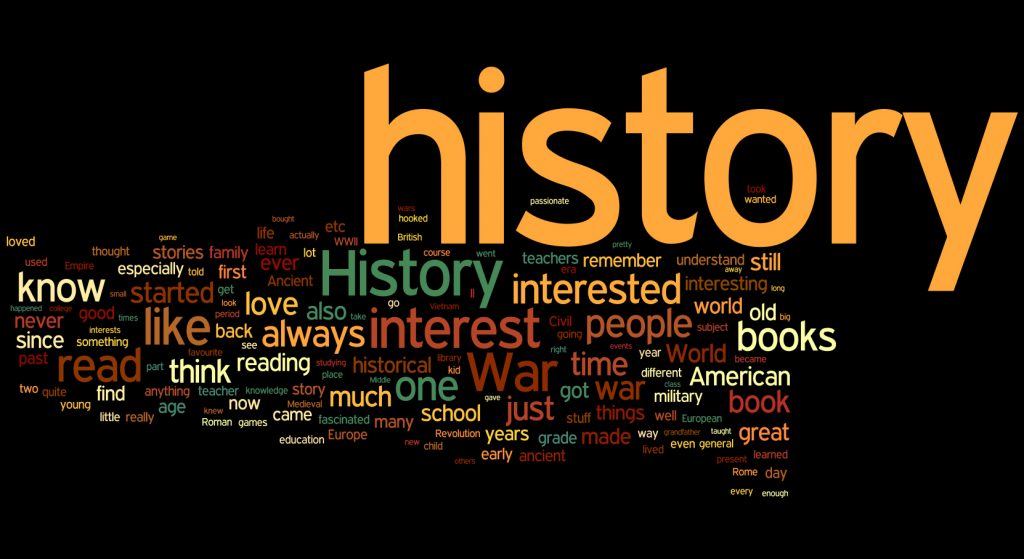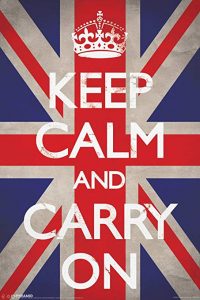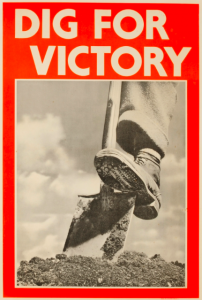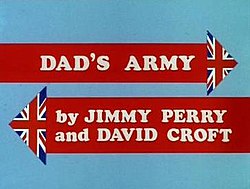
I have long admired the “brand” of Keep Calm and Carry On. In fact, I have purchased products from their website and created my own versions of it, like Keep Calm and Finish Strong as the lead image for my four-part blog series on presentation closing techniques and options. But it was only recently that I became curious about the backstory of this clever slogan.
After a quick Google search, which led me to a Wikipedia website, I realized that this slogan has been around for a long time and has historical reference. Not wanting to believe everything that I read online, I reached out to a good friend in my network, Emma Campbell Visick, who lives and works (and writes) in the United Kingdom. She is a brilliant thinker, writer, and student of history. I have enjoyed many dinner conversations with her and her husband Richard, and come away astounded by how much I don’t know about what transpired in WWI, WWII, the Vietnam War, the Korean War, and other conflicts that have shaped the world.
It’s a very good thing to have a well-read jobbing historian (her words, not mine) in your professional network. When I received Emma’s email response to my question, “What’s the backstory of the Keep Calm and Carry On slogan,” I knew I had a blog post in the making. It is with joy that I share Emma, her knowledge and perspective with all of you. I hope you will read through to the very end as I did. There is so much we don’t know, don’t remember, and are no longer taught about history. We owe it to ourselves to be more curious about what has happened in the past. We have much to learn from the past, and hopefully this knowledge can help prevent us from repeating the same mistakes. It is also a good reminder of the power of propaganda to shape our thoughts, feelings and actions about contemporary issues. By studying history you might just realize that we’ve been here before.
Please enjoy this article (and the true British English spelling) by guest contributor, Emma Campbell Visick. And please share with others in your network and on social media. We still have much to learn from our military past. History is a great teacher. Let’s be more curious and willing students.
***************
Does History Help Us Understand What We Need To Do To Dig Deeper?
By Emma Campbell-Visick

As Britain anticipated war with Germany in 1939 – and all the uncertainty that went with another conflict with that country in the space of just over 20 years – the Government set about conceptualising and building communication campaigns aimed at galvanising the will and actions of the people to withstand a further period of hostilities. Developed in the Spring of that year, the Keep Calm and Carry On tag line pre-dated the outbreak of the Second World War but was apparently never formally broadcast. Campaign posters like the one shown here were discovered over sixty years later; igniting a combination of nostalgia and pride in how well these few, simple words summed up the British psyche – not just in times of war, either – and this clever catchphrase has since been extended into a variety of different places and uses.
Inspiring Action and Self-Reliance
A campaign that did see the light of day – Dig For Victory – built on the sentiments of stoicism and self-reliance evoked by Keep Calm and Carry On, and urged us to use every bit of space in which to grow our own food. Dependent on sea trade routes, Britain faced a long and arduous battle to maintain supply lines as the highly effective German U-Boats wreaked havoc on our merchant shipping convoys. When placed alongside the assertion (attributed to Napoleon) that, “An army marches on its stomach”, Dig for Victory hit home the message that Britain had to build capability and capacity to feed itself.

Similarly, and in the interests of eeking-out and recycling, the Make Do And Mend campaign distributed a pamphlet filled with useful tips. It appealed to the value of thrift and the drive against wasting precious resources. Other noteworthy campaigns sought contributions of all and any metal objects that were to be melted down and used for building new aircraft and the manufacture of armaments. A fabulous notion, other than saucepans, wrought iron railings, and tin cups (amongst the plethora of other things offered up by the Great British public) were completely unusable for those particular purposes.
Mobilising a Workforce
Throughout the War, the British Government continued to release campaigns aimed at galvanising its people to keep that stiff upper lip and push through. The Blitz continued during the Battle of Britain, and until we were properly able to secure our skies. Key to this was the manufacture of aircraft, for which we required the rapid and wholesale employment of women, as so many men had been displaced into military roles.
Additionally, those who could no longer work, or who were unfit / too old for combative roles, were assigned to fire-watching cum air raid warden cum peacekeeping roles on land. This was epitomised through the long-running comedy series Dad’s Army; which addressed almost every aspect of what life was like at that time for those left behind to guard the home front…albeit in a comedic setting.

While Keep Calm and Carry On might not have been released into the public domain, the immortal words of Corporal Jones, “Don’t panic!” entered the vernacular to epitomise the state of the British mind during six years of conflict; the monologue of an elderly soldier, who had had a decorated military career in the Sudan in the late nineteenth century, but who was prone to panicking and venting forth when confronted by the unfamiliar military environment he faced in the mid-twentieth. Watch these funny “Don’t Panic” scenes from the TV series, Dad’s Army.
Ten Insights From Our Military Past
Most people have limited knowledge or were never taught at school about the details of our military past. The study of history – and the overwhelming impact of conflict, not only on the fighting forces but also on civilians caught up in the theatres of war – could assist our better understanding of and approaches towards some of the challenges faced during peacetime.
Here are ten action points which, I believe, we can take forward in our every day lives; and some insights from our military past that, perhaps, put the necessity of taking such action into context.
1. Defy Ignorance
Insight: In the build up to Operation Barbarossa, part of the Eastern Front campaign in Europe, four million Axis troops amassed along the Soviet border from the Baltic to the Black Sea. Confident of the strength of the non-aggression pact signed with Germany in August 1939, Stalin neglected to believe any of the reports from his military advisors until the covers were removed from the canons and firing started on 21 June 1941.
Take Action:
-
- Gather intelligence
- Avoid wishful thinking
- Make it your duty to understand what is going on
- Ask the bold, challenging questions – don’t be afraid to ask.
2. Know What You Are Good At (as well as your limitations)
Insight: Britain proved that we could wage war in the skies, while the battle for the sea took the duration of the war to play out. Victory in the Battle of Britain provided a glimmer of hope in an otherwise bleak landscape, and was used to good effect by the propaganda machine that was steadily churning away.
Take Action:
-
- Build credibility and trust based on what you are good at and what can reasonably be achieved
- Build on your strengths, and any weaknesses will take care of themselves.
3. Lead by Example
Insight: The massacres and crimes against humanity committed across the globe in the quest for domination and control have yielded lessons that lead the fight for human rights; calling out misdemeanours and prosecuting the perpetrators of atrocities.
Take Action:
-
- Lead where you can, otherwise seek leadership and assist that leadership towards a higher goal
- And, if you can’t behave, don’t say or do anything.
4. Get Organised
Insight: The Great War 1914-19 and its successor in 1939-45 demonstrated the need (nay imperative) for dialogue and negotiation in the face of perceived or actual threats. Since 1945, the United Nations, NATO (the military might behind diplomatic efforts), and the European Union have enabled like-minded nation states to work together rather than apart, and to achieve strength through numbers; while ensuring that no single person or state is more dominant or stronger than the sum of the parts.
Take Action:
-
- As Kathy McAfee would say, “Build your network!”
5. Plan
Insight: All military battles have had plans – some more successful than others – and, through planning, people can communicate and understand the intentions and objectives of others; enabling them to put their own plans into perspective.
Take Action:
-
- Failing to plan is planning to fail
- Plans change, but you have to start somewhere.
6. Manage Risk
Insight: Arguably, every action of the British propaganda machine addressed the risks of the time; while communicating our strengths, leveraging opportunities, and demonising the threats. A notorious campaign encapsulated the risk that Careless Talk Costs Lives. From what I have read and been told, this was a pretty effective message. By way of illustration…in the build up to D-Day (6 June 1944), men and materiel of epic proportions and infrastructure of an unimaginable scale were accumulated along the South Coast of England; the visible landscape was transformed over a period of months. Yet, people did not talk about it. They could see it with their own eyes, they understood that stuff was happening, yet they knew the importance of keeping matters secret. About secrets, more later…back to risks…do you know what “risk” is?
Risks are not the same as issues:
-
- An issue is a risk that has not been effectively dealt with.
- An issue requires more resources to resolve than risks take to mitigate; once you have opened that door and allowed that horse to bolt, there could be a lot of running about to do.
Take Action:
-
- Make it your business to understand the difference between a risk and an issue, and how to manage risks; and, who you will need to call upon should you be unable to hold it all together and that door flies open. And, just to be clear, shooting the horse in this instance should be the worst-case scenario.
7. Learn Lessons
Insight: A key outcome of war in Europe and the economic aftermath has been the formation of the European Union. Initially comprising the western states, the EU now includes a number of countries that formed part of the Soviet Bloc until 1989. Irrespective of your politics, it is an unquestionable fact that the EU has been the single greatest contributor to peace and economic stability in Europe since WWII; peace derived through stable economies. Why Britain would want to leave that Union, therefore, is mind-boggling.
Take Action:
-
- Understand the cause and effect of the things that affect you: if I don’t keep in touch with my network, then picking up that phone or going to that networking event fills me with dread. You get the picture…
8. Avoid Sharing Secrets
Insight: Stealing secrets was, and has been, the stock-in-trade for some infamous organisations. When on our side – like Bletchley Park – it was all good. When we were at the receiving end, the outcomes could be disastrous. As such, secrets represent the bulwark between success and failure and, in a commercial context, should be protected unless it is more beneficial to share them. At a personal level, secrets could amount to your intellectual property; the human capital that you have worked hard for.
Take Action:
-
- Know which secrets (of your success) can be shared
- “Keep Your Powder Dry” – let people discover who you are and what you are capable of; people in suspense will pay more attention to you, be patient with you, and seek you out because they are interested to know more about you.
9. Be Charismatic and Persuasive
Insight: History shows that, when people are led or forced to do things through fear, they remember that terror. When led through persuasion and charisma, they remember the journey.
Take Action:
-
- Inspire people to follow you; avoid using the stick if you can.
10. Build Resilience and Resolve
Insight: Churchill’s words, “We shall fight on the beaches, we shall fight on the landing grounds, we shall fight in the fields and in the streets, we shall fight in the hills; we shall never surrender…” are well-known; words uttered in Britain’s “darkest hour”. In a modern, peacetime, and civilian context, the “fight” could be our individual paths towards achieving success – however we define it – and that we explore success in many, different places, and keep our resolve to do so through open-mindedness and (dare I say it) a degree of experimentation.
Take Action:
-
- Understand what is important and why
- Network with like-minded individuals and organisations to build a common platform and understanding; learn from them
- Be brave without making a fool of yourself; be courageous without falling on your sword – you’ll be remembered, but it could take a while before people speak to you again.
***************
About the Writer

Emma Campbell-Visick is a Programme Manager and Change Manager, specialising in IT-driven change and organisational transformation involving business process re-engineering, people management, and regulatory enforcement.
As a Programme Manager, she works with clients in the public and private sectors to deliver enhancements and benefits to their businesses, ensuring that portfolios of change are aligned with their corporate strategies and the vision end states for their target operating models.
In her role as a Change Manager, she defines the change management strategies for her clients, prepares change teams, develops sponsorship models, manages change through communications and training, and monitors the actions required to reinforce and embed change.
Passionate about learning and education, Emma volunteers as a student mentor at Southampton University in the United Kingdom – a member of the Russell Group. In her spare time, she reads about military history and the impact of military action on civilian populations.
Connect with Emma on LinkedIn – https://www.linkedin.com/in/emma-campbell-visick-290108933

